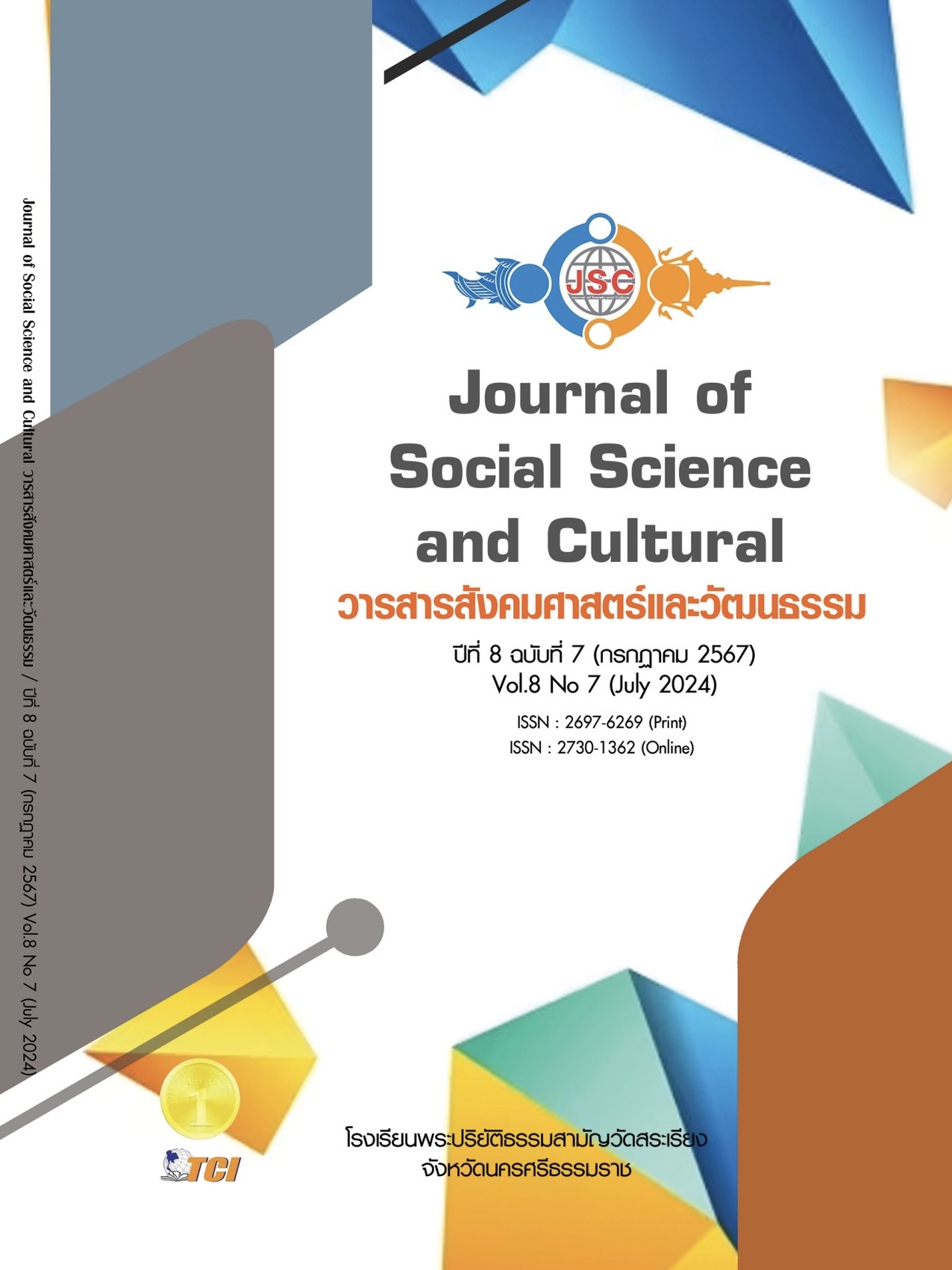THE DEVELOPMENT OF VIDEO PODCAST TO STRENGTHEN THE KNOWLEDGE OF DIGITAL LEISURE
Main Article Content
Abstract
This research article aims to 1) develop the quality of video podcasts to promote knowledge on effective digital leisure, and 2) study the effects of video podcasts in promoting knowledge on digital leisure. This experimental research involves a sample group of 46 undergraduate students from the Recreation Leadership program at the Faculty of Physical Education, Srinakharinwirot University, who are leaders in their activities and their major. The research tools include questionnaires and tests, collected by distributing tests and satisfaction questionnaires. The statistics used in the research are mean, standard deviation, and t-test, with descriptive data analysis. The findings of the research are as follows: 1) The overall quality of the video podcasts, developed by content experts, was rated as good. When considering each aspect, the quality was good in all areas. The overall quality assessment by media experts was also rated as good, with each aspect being good. 2) The video podcasts aimed at promoting knowledge on effective digital leisure time usage met the 80/80 efficiency criterion. Three trials were conducted. The first trial involved evaluating and checking the quality of the video podcasts for further improvement. In the second trial, the video podcasts had an efficiency (E1/E2) of 84.33/88.66, and in the third trial, the efficiency (E1/E2) was 81.11/87.88. The post-learning average scores on knowledge and understanding of digital leisure were significantly higher than the pre-learning scores at the .05 level. The overall satisfaction with the video podcasts was very high. When considering each aspect, satisfaction was highest in all areas.
Article Details
References
กรมสุขภาพจิต. (2563). New Normal ชีวิตวิถีใหม่. เรียกใช้เมื่อ 11 ตุลาคม 2564 จาก https://dmh.go.th/news/view.asp?id=2288
ชวันธร สัมฤทธิ์ และคณะ. (2555). การพัฒนารูปแบบการเรียนรู้โดยใช้เทคโนโลยีพอดคาสต์สำหรับไอแพดเพื่อส่งเสริมความรู้ความเข้าใจเทคนิคการทำวิจัยพื้นฐานทางคอมพิวเตอร์ศึกษา. ใน รายงานสืบเนื่องจากประชุมการประชุมวิชาการเสนอผลงานวิจัยระดับบัณฑิตศึกษาแห่งชาติ ครั้งที่ 12. มหาวิทยาลัยขอนแก่น.
ชัยยงค์ พรหมวงศ์. (2556). การทดสอบประสิทธิภาพสื่อหรือชุดการสอน. วารสารศิลปากรศึกษาศาสตร์วิจัย, 5(1), 5-20.
ทนงศักดิ์ แสงสว่างวัฒนะ. (2563). New Normal วิถีชีวิตใหม่และการปรับตัวของคนไทยหลังโควิด-19: การงาน การเรียน และธุรกิจ. วารสารการบริหารการปกครองและนวัตกรรมท้องถิ่น, 4(3), 371-386.
ปรีดี นุกุลสมปรารถนา. (2563). ประเภทของ Digital Content ที่ควรมี. เรียกใช้เมื่อ 11 ตุลาคม 2564 จาก https://www.popticles.com/marketing/types-of-content-we-should-have/
วิลาส ฉํ่าเลิศวัฒน์ และนฤพล ตั้งตรีรัตน์. (2551). VDO Podcast: TV ออนไลน์ทำเองได้ง่ายนิดเดียว. กรุงเทพมหานคร: โปรวิชั่น.
ศิตา เยี่ยมขันติถาวร และจรีลักษณ์ รัตนาพันธ์. (2564). การศึกษาผลการใช้บทเรียนภาษาอังกฤษผ่านพอดคาสต์เพื่อพัฒนาความรู้พื้นฐานภาษาอังกฤษสำหรับนักศึกษาระดับปริญญาตรมหาวิทยาลัยสุโขทัยธรรมาธิราช. วารสารพัฒนาการเรียนการสอนมหาวิทยาลัยรังสิต, 15(2), 173-185.
อาลี ปรียากร. (2560). การศึกษาแนวทางการผลิตรายการกระจายเสียงเพื่อเผยแพร่ผ่านรูปแบบรายการพอดแคสต์ในประเทศไทย. กรุงเทพมหานคร: คณะนิเทศศาสตร์และนวัตกรรมการจัดการสถาบันบัณฑิตพัฒนบริหารศาสตร์.
Carnicelli, S. et al. . (2017). Digital Leisure Cultures Critical Perspectives. London: Routledge.
Fernandez, V. et al. (2015). Past, Present, and Future of Podcasting in Higher Education. New Frontiers of Educational Research. Retrieved October 11, 2021, from https://link.springer.com/chapter/10.1007/978-3-642-55352-3_14
Liu, W. (2015). A historical overview of uses and gratifications theory. Cross-Cultural Communication, 11(9), 71-78.
Ruggiero, T. E. (2000). Uses and Gratifications Theory in the 21st Century. Mass Communication and Society, 3(1), 3-37.


